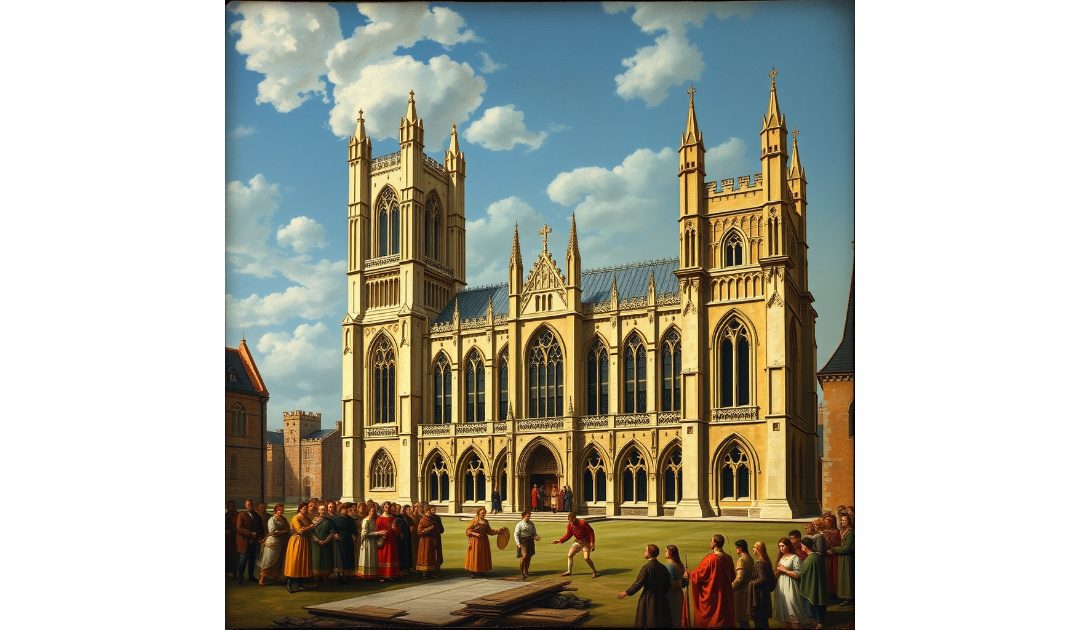On 28th December 1065 Westminster Abbey was consecrated. Westminster Abbey, one of the most iconic religious structures in the United Kingdom, has a rich history that spans over a thousand years. Located in the City of Westminster, it has been a site of Christian worship since its foundation. The origins of the abbey can be traced back to the early 7th century when a small church was built on the site, possibly by St. Peter, after whom it is named. However, the current structure largely dates from the 13th century.
In 1042, King Edward the Confessor, who was deeply religious, began the construction of a new church on the site, which was consecrated in 1065. Edward was buried there shortly after his death, and the abbey became a significant pilgrimage site. Following the Norman Conquest, William the Conqueror was crowned king in Westminster Abbey in 1066, establishing its role as the traditional site for royal coronations.
The abbey underwent significant renovations and expansions over the centuries, particularly during the reign of Henry III in the 13th century, who transformed it into a Gothic masterpiece. The present structure features stunning stained glass windows, intricate stone carvings, and the iconic nave, which is renowned for its height and beauty. The abbey also became a burial site for many English monarchs, starting with Edward the Confessor and continuing with notable figures such as Henry III, Elizabeth I, and George II.
Westminster Abbey has also played a crucial role in British history beyond coronations and burials. It has hosted numerous royal weddings, including the marriage of Prince William and Catherine Middleton in 2011. The abbey is also the site of significant national events, such as state funerals and memorial services, including those for Sir Winston Churchill and the late Queen Elizabeth II.
In the 16th century, during the English Reformation, the abbey was dissolved by Henry VIII, but it was repurposed as a cathedral and has remained a place of worship ever since. The abbey has served as a center for the arts and education, housing the tombs of many poets, scientists, and writers, including Geoffrey Chaucer and Isaac Newton.
In modern times, Westminster Abbey continues to be a working church, offering daily services and welcoming millions of visitors each year. It is a UNESCO World Heritage Site, recognized for its architectural and historical significance. The abbey stands as a symbol of British heritage, embodying the intertwined history of the monarchy, religion, and culture in the United Kingdom. Its majestic presence and storied past make it a focal point of national identity and pride.
I doubt that the Sir Anthony Standen Adventures will earn me a place in Poets’ corner, but one can but hope.

